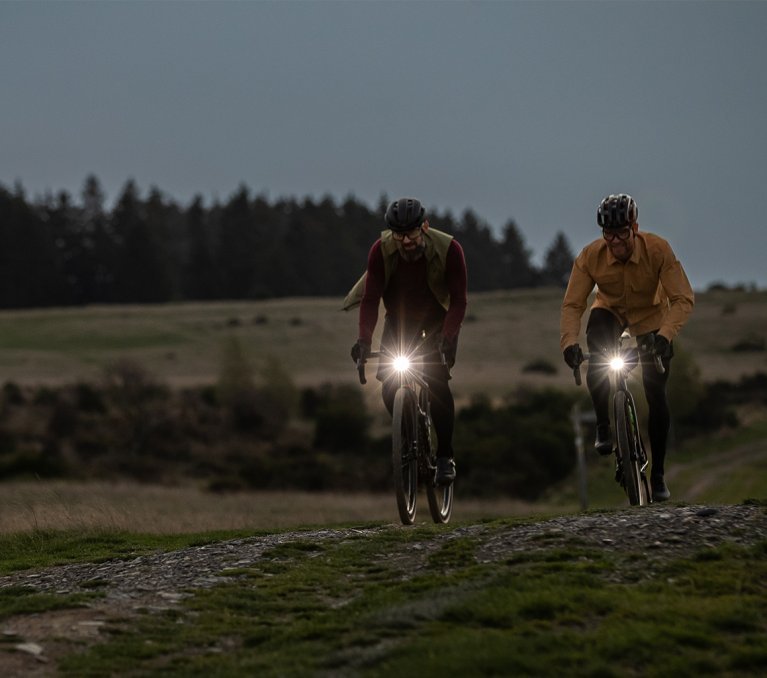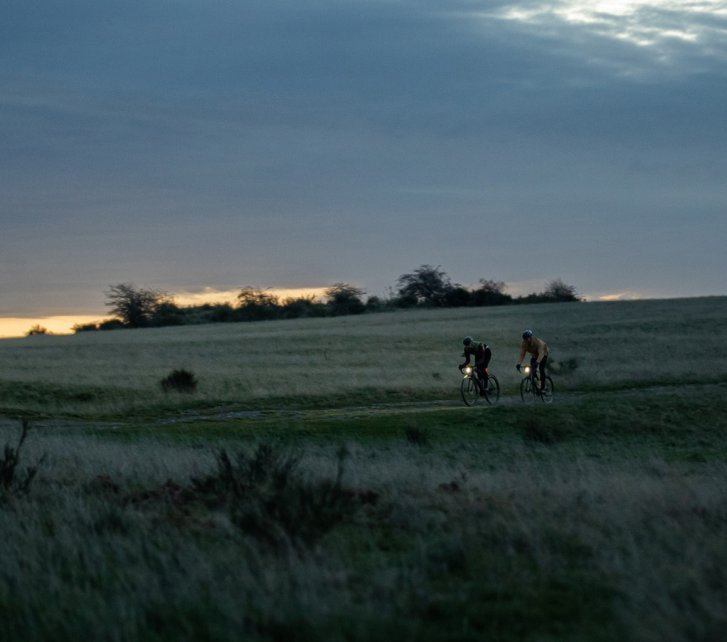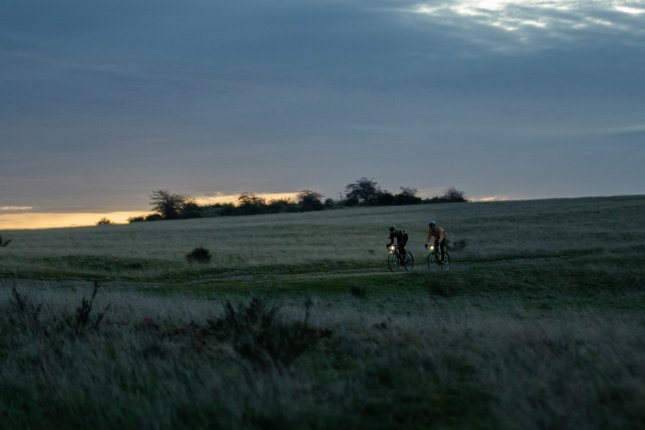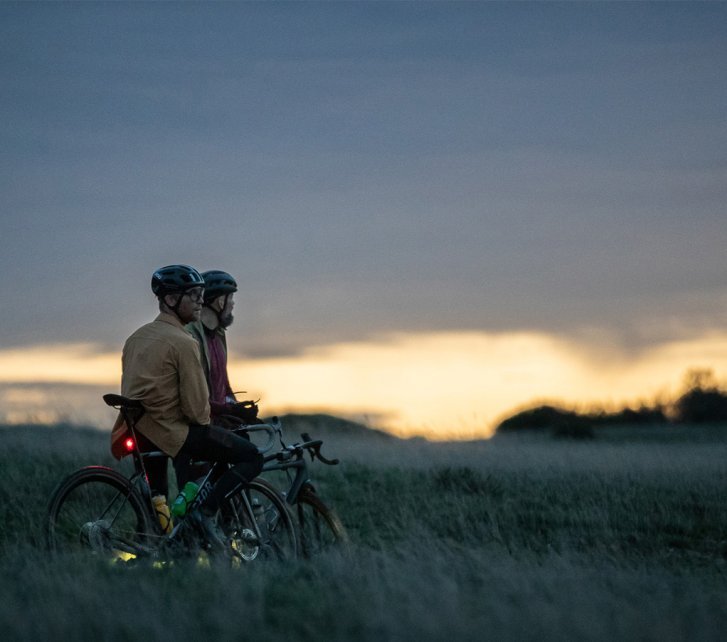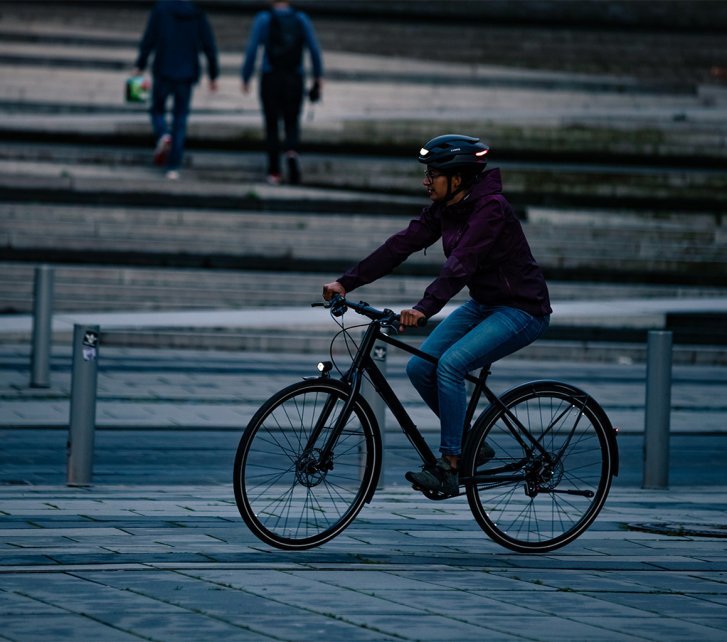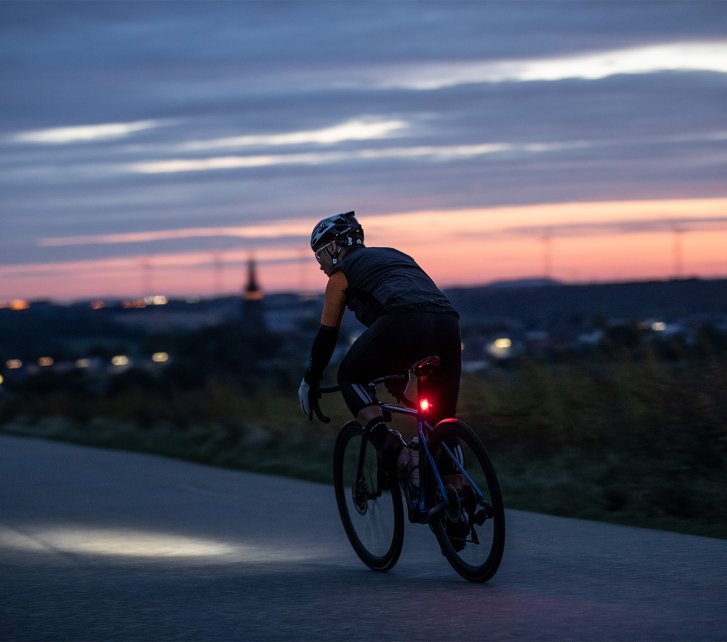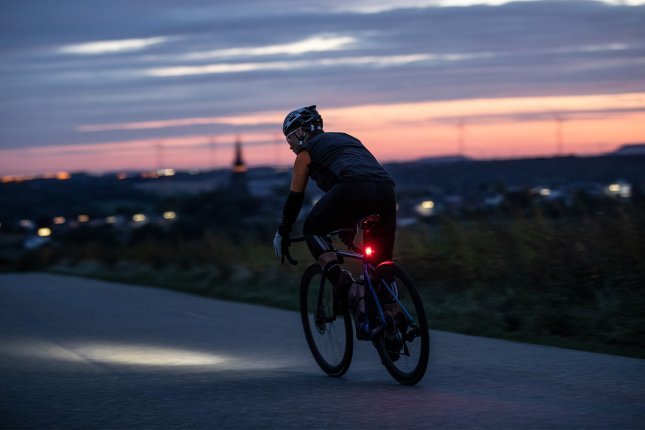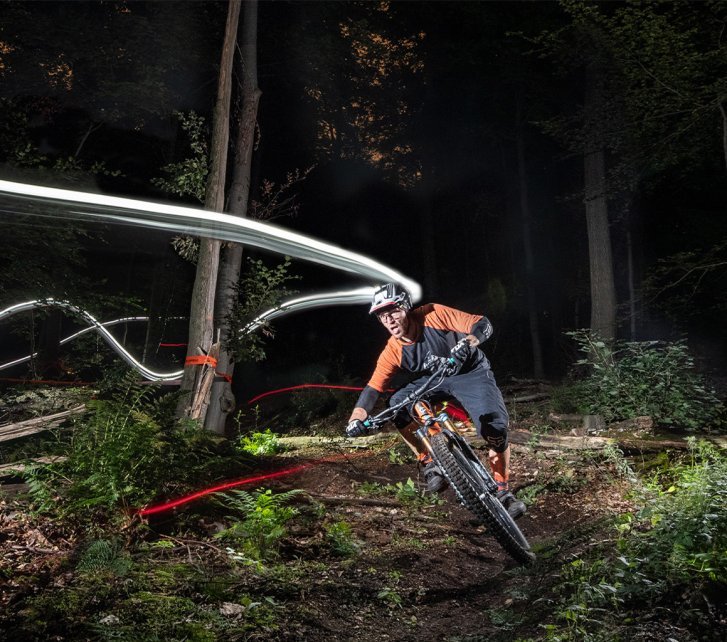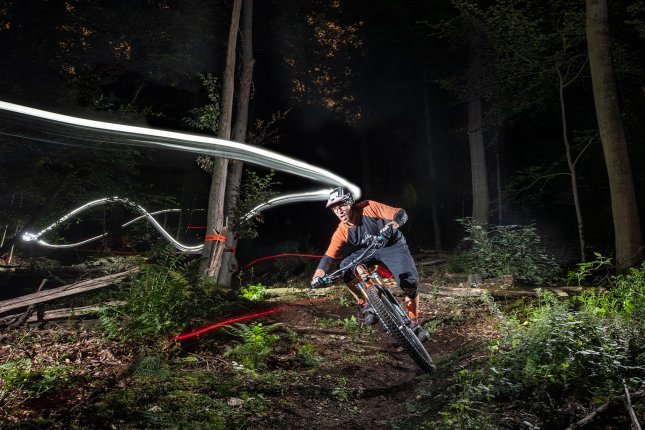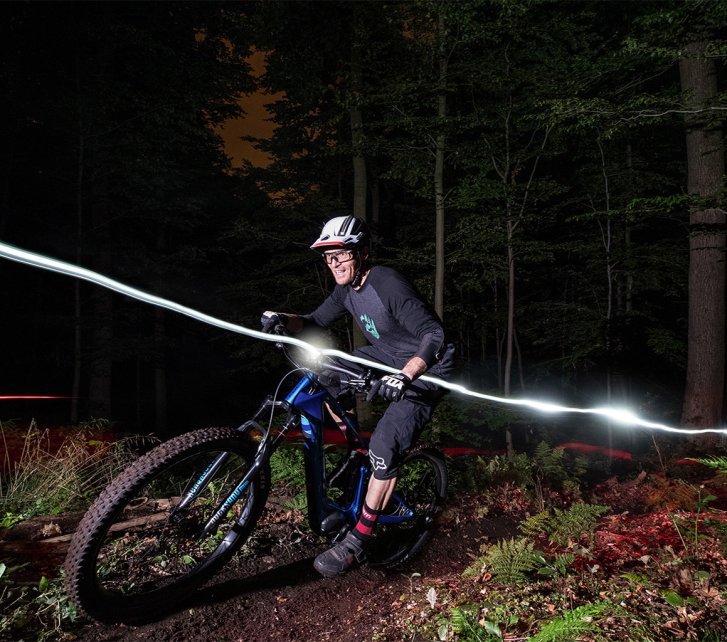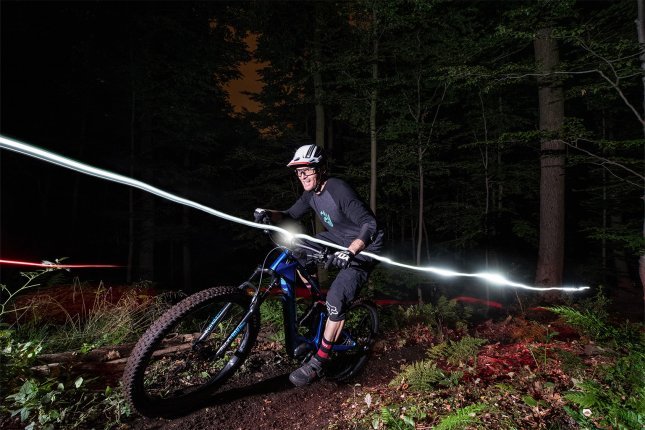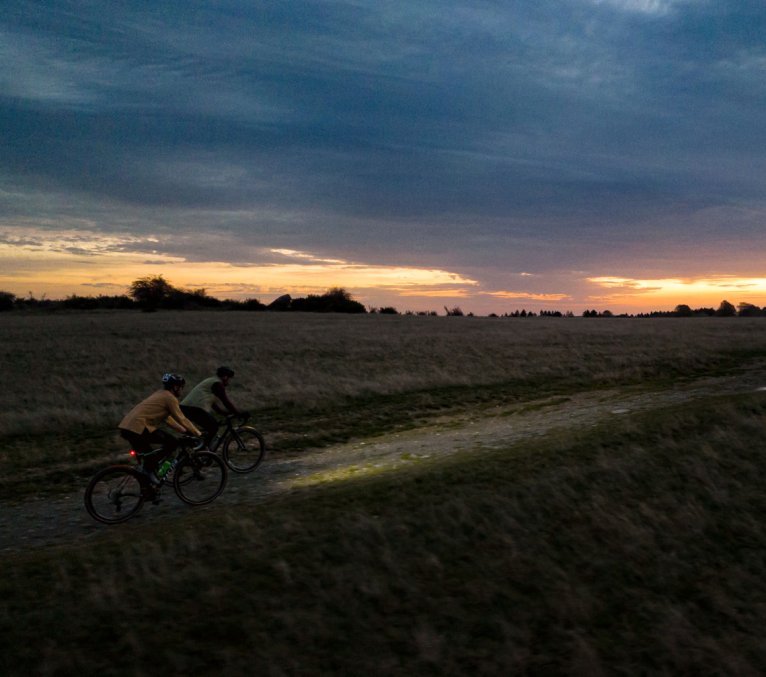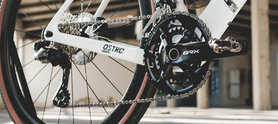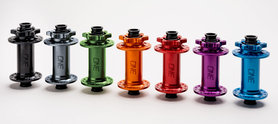The Enlightenment: All about Lights for Bicycles & E-Bikes
Riding in the light is usually more fun than in the dark - and most folks would agree on that. But as a "real" rider, that doesn't matter.
But seasons could care less about what we want. If you're sensibly leaving your car at home for your commute, you've got to adapt. Even though mountain bike and gravel night rides have their special charm, it's somehow more fun during the day.
But those who work full-time often simply don't have the chance to go for a nice ride in daylight after work. Even many road cyclists don't let the darkness deter them and prefer pedaling through the countryside rather than stubbornly sitting on a trainer.
Whether you're mainly thinking eco-friendly (and saving costs) by biking to work or you're more sport-oriented and want to ride anytime regardless of light conditions: In both cases, you need proper lighting for your bike.
Safe on the road at dusk: Bright bike lights for optimal visibility.
Which lamp for what purpose?
But which lamp do you take for which bike and for what purpose? How much do you need to invest to not just be perceived as a candlelight in the distance? The range of bicycle lighting is huge and, admittedly, a bit overwhelming. That's why we're shedding light on the darkness and illuminating you about the use cases and the most recommendable lamps.
The requirements are quite different, but in general, we can identify 5 types of riders or their bikes:
Rely on bright rear lights for your evening ride!
Cyclists use lights to stay visible in low-light conditions.
City bike or touring bike with hub dynamo
For the daily commute, such a bike is super practical since constantly charging the battery can be annoying – at least if you're not just cycling in the summer. You want lighting you can always rely on for commuting. The lamps are usually permanently installed to prevent theft. Definitely recommended is the parking light function, which is realized through an integrated capacitor. This is important because the dynamo does not produce any voltage at a standstill (for example, at traffic lights). The small disadvantages of the dynamo are its friction losses. This becomes obvious as soon as you lift the front wheel and rotate it by hand: The wheel stops after just a few turns – unlike a bike without a dynamo. In reality, while riding, the losses are relativized by the massive inertia generated by the body weight and the weight of the bike. Put simply: The weight keeps the wheel "in motion." The braking effect of the dynamo's friction is then hardly noticeable or not noticeable at all. The well-known manufacturers in this area are busch+müller and Axa for price-performance-oriented mid-range. It gets more upscale with Supernova and SON.
A city bike with a hub dynamo provides reliable lighting – perfect for nighttime commutes in the city.
Racing bike, gravel, and other bikes without a dynamo
For such, rather sporty or minimalist bikes, battery-powered lamps with quick-release are a good choice. They are easy to mount and remove, "not disturbing" the look of the bike when detached. A hub dynamo is not necessary. Since the power supply comes from the battery, not a dynamo, there are no friction losses. Modern lamps with battery status indicators won't leave you in the dark, are rightfully bright, and thanks to modern LED technology, efficient, so you don't have to constantly charge the batteries. The front light is usually attached to the handlebar with a quick release, the rear light is mostly attached with a rubber O-ring to the seatpost or the frame's rear. The manufacturers Sigma, Cateye, and Lezyne serve this sector with affordable lamps in the entry-level and mid-range. busch+müller also has a wide range, albeit a bit more towards permanent installation. The company Garmin, otherwise known for GPS devices, has interesting rear lights with warning functions for approaching vehicles as well as camera functions for recording accidents in the Varia Radar 2 lineup.
Battery-powered lights on a bike ensure clear visibility during evening rides without affecting the bike’s sleek design.
A special feature in our program is the manufacturer LIGHTSKIN. This German manufacturer offers handlebars and seatposts with integrated LED battery lighting. A small revolution especially for your stylish, high-quality city bike or touring bike, whose look you wouldn't want to "spoil" with an attached lamp.
E-Bike (Road)
On many bikes, a lamp can directly run off the e-bike battery, offering a neat, integrated solution. It’s crucial to find the right lamp for your specific motor type since the connectors aren’t universal. Thanks to the high battery capacity, e-bike lamps can deliver massive brightness, with some pretty sophisticated models available on the market. As more and more e-bikes, including sporty e-MTBs, are used for commuting, investing in good lighting makes a lot of sense. The top dogs in the premium category are Supernova and Lupine, but busch+müller and Lezyne also have top-notch products in their lineup. For those on a budget, Axa and CATEYE offer lamps. Important: Be sure the lamp you want can connect to your e-bike battery before buying. You can always find the specs in the product description. If you’re still unsure, feel free to contact our service team.
Mountain Bike
In the dark forest and for more technical rides, a helmet lamp is key. The light beam is generous and always exactly where you’re looking. What’s unacceptable in traffic (you would blind many road users) makes perfect sense here. A handlebar lamp is less useful since, depending on your speed and changing terrain, you might need to look farther ahead or right in front of your front wheel. In sharp turns, your gaze needs to "precede" the direction of your handlebars – that’s where the helmet lamp excels. If you want to turn night into day and are all about premium quality, Lupine is almost unavoidable. Sigma, a solid mid-range brand, offers the well-conceived Buster series of helmet lamps for beginners and ambitious riders, catching up significantly in the helmet lamps domain over the past years. As mentioned above: Helmet lamps are a no-go on the street! Therefore, we strongly recommend using a small handlebar lamp on your way to the forest instead of a helmet lamp.
A helmet light illuminates the path for mountain bikers during nighttime rides in the forest, ensuring clear visibility in sporty turns.
E-Mountainbike
Even though you see more and more e-MTBs on the roads, they truly belong in the forest, off-road. Just like with non-motorized mountain bikes, a helmet lamp is the ultimate tool. If needed, the e-MTB can also use a fixed lamp connected to the e-bike battery. Remember: Helmet lamps are not allowed on the road.
A helmet light ensures clear visibility during nighttime rides bike in the forest.
Maximum Visibility
If safety is your top priority and you want to be "maximally visible," we highly recommend a helmet with integrated lighting. Unlike a classic helmet lamp, integrated lighting doesn’t blind other road users but simply increases your visibility in traffic. Such helmets are meant to complement standard bike lighting - not replace it.
More visibility, more safety: Helmets with integrated lighting make you stand out in traffic – without dazzling others.
Heads up: Lamps with flashing mode attached to the bike are not permitted in traffic. While flashing lights do increase visibility, they can distract from the overall traffic situation, thus compromising general safety.
There are also reflective clothing and accessories that make you even more noticeable in traffic.
We hope this has shed some light on selecting the right lamps for your intended use and specific bike. If you have any more questions or are feeling unsure, feel free to contact us anytime.

